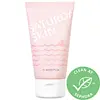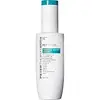What's inside
What's inside
 Key Ingredients
Key Ingredients

 Benefits
Benefits

 Concerns
Concerns

 Ingredients Side-by-side
Ingredients Side-by-side

Water
Skin ConditioningGlycerin
HumectantCellulose
AbsorbentButylene Glycol
HumectantAlcohol Denat.
AntimicrobialDipropylene Glycol
HumectantPentylene Glycol
Skin ConditioningCeteareth-12
EmulsifyingCitrus Limon Peel Oil
MaskingJuniperus Mexicana Oil
MaskingCitrus Aurantium Dulcis Peel Oil
MaskingCitrus Grandis Peel Oil
MaskingEucalyptus Globulus Leaf Oil
PerfumingLavandula Angustifolia Oil
MaskingRosmarinus Officinalis Leaf Oil
MaskingAloe Barbadensis Leaf Polysaccharides
EmollientPhoenix Dactylifera Seed
Skin Conditioning1,2-Hexanediol
Skin ConditioningTriethanolamine
BufferingPolysorbate 20
EmulsifyingCaprylyl Glycol
EmollientLactose
HumectantHydroxypropyl Methylcellulose
Emulsion StabilisingEthylhexylglycerin
Skin ConditioningJojoba Esters
EmollientHydrogenated Lecithin
EmulsifyingMannitol
HumectantAscorbyl Palmitate
AntioxidantTocopheryl Acetate
AntioxidantCholesterol
EmollientPEG-800
HumectantBromelain
Skin ConditioningPapain
Skin ConditioningAscorbic Acid
AntioxidantSh-Oligopeptide-1
Skin ConditioningSh-Polypeptide-1
Skin ConditioningSh-Oligopeptide-2
Skin ConditioningSh-Polypeptide-22
Skin ConditioningSh-Polypeptide-45
Skin ConditioningSh-Polypeptide-8
HumectantSh-Polypeptide-9
Skin ConditioningCarbomer
Emulsion StabilisingDisodium EDTA
CI 77007
Cosmetic ColorantWater, Glycerin, Cellulose, Butylene Glycol, Alcohol Denat., Dipropylene Glycol, Pentylene Glycol, Ceteareth-12, Citrus Limon Peel Oil, Juniperus Mexicana Oil, Citrus Aurantium Dulcis Peel Oil, Citrus Grandis Peel Oil, Eucalyptus Globulus Leaf Oil, Lavandula Angustifolia Oil, Rosmarinus Officinalis Leaf Oil, Aloe Barbadensis Leaf Polysaccharides, Phoenix Dactylifera Seed, 1,2-Hexanediol, Triethanolamine, Polysorbate 20, Caprylyl Glycol, Lactose, Hydroxypropyl Methylcellulose, Ethylhexylglycerin, Jojoba Esters, Hydrogenated Lecithin, Mannitol, Ascorbyl Palmitate, Tocopheryl Acetate, Cholesterol, PEG-800, Bromelain, Papain, Ascorbic Acid, Sh-Oligopeptide-1, Sh-Polypeptide-1, Sh-Oligopeptide-2, Sh-Polypeptide-22, Sh-Polypeptide-45, Sh-Polypeptide-8, Sh-Polypeptide-9, Carbomer, Disodium EDTA, CI 77007
Water
Skin ConditioningGlycerin
HumectantRosa Centifolia Flower Water
Skin ConditioningIsopropyl Myristate
EmollientSqualane
EmollientMannitol
HumectantButylene Glycol
HumectantNatto Gum
Tripeptide-10 Citrulline
Skin ConditioningAcetyl Octapeptide-3
HumectantPalmitoyl Hexapeptide-12
Skin ConditioningAcetyl Tetrapeptide-11
Skin ConditioningAcetyl Hexapeptide-8
HumectantAcetyl Hexapeptide-1
Skin ConditioningPalmitoyl Oligopeptide
CleansingAcetyl Tetrapeptide-9
Skin ConditioningAcetyl Tetrapeptide-2
Skin ConditioningTripeptide-1
Skin ConditioningPalmitoyl Tetrapeptide-7
Skin ConditioningHexapeptide-11
Skin ConditioningDipeptide Diaminobutyroyl Benzylamide Diacetate
Skin ConditioningPalmitoyl Tripeptide-5
Skin ConditioningTrifluoroacetyl Tripeptide-2
Skin ConditioningPalmitoyl Tripeptide-1
Skin ConditioningSodium Polyglutamate
HumectantSodium Hyaluronate
HumectantTocopheryl Acetate
AntioxidantRetinyl Palmitate
Skin ConditioningAscorbic Acid
AntioxidantHydrolyzed Soy Protein
HumectantHydrolyzed Wheat Protein
Skin ConditioningLecithin
EmollientPseudoalteromonas Ferment Extract
HumectantAcrylates Copolymer
Magnesium Chloride
Polysorbate 20
EmulsifyingDimethyl Isosorbide
SolventAcrylates/C10-30 Alkyl Acrylate Crosspolymer
Emulsion StabilisingLeuconostoc/Radish Root Ferment Filtrate
AntimicrobialPEG-8 Dimethicone
EmulsifyingDisodium Phosphate
BufferingCarbomer
Emulsion StabilisingDextran
Sodium Lactate
BufferingTetradecyl Aminobutyroylvalylaminobutyric Urea Trifluoroacetate
Skin ConditioningXanthan Gum
EmulsifyingTriethanolamine
BufferingSodium Phosphate
BufferingOctyldodecanol
EmollientSilica
AbrasiveSodium Propoxyhydroxypropyl Thiosulfate Silica
Sodium Hydroxide
BufferingCaprylyl Glycol
EmollientPotassium Sorbate
PreservativeSodium Benzoate
MaskingPhenoxyethanol
PreservativeWater, Glycerin, Rosa Centifolia Flower Water, Isopropyl Myristate, Squalane, Mannitol, Butylene Glycol, Natto Gum, Tripeptide-10 Citrulline, Acetyl Octapeptide-3, Palmitoyl Hexapeptide-12, Acetyl Tetrapeptide-11, Acetyl Hexapeptide-8, Acetyl Hexapeptide-1, Palmitoyl Oligopeptide, Acetyl Tetrapeptide-9, Acetyl Tetrapeptide-2, Tripeptide-1, Palmitoyl Tetrapeptide-7, Hexapeptide-11, Dipeptide Diaminobutyroyl Benzylamide Diacetate, Palmitoyl Tripeptide-5, Trifluoroacetyl Tripeptide-2, Palmitoyl Tripeptide-1, Sodium Polyglutamate, Sodium Hyaluronate, Tocopheryl Acetate, Retinyl Palmitate, Ascorbic Acid, Hydrolyzed Soy Protein, Hydrolyzed Wheat Protein, Lecithin, Pseudoalteromonas Ferment Extract, Acrylates Copolymer, Magnesium Chloride, Polysorbate 20, Dimethyl Isosorbide, Acrylates/C10-30 Alkyl Acrylate Crosspolymer, Leuconostoc/Radish Root Ferment Filtrate, PEG-8 Dimethicone, Disodium Phosphate, Carbomer, Dextran, Sodium Lactate, Tetradecyl Aminobutyroylvalylaminobutyric Urea Trifluoroacetate, Xanthan Gum, Triethanolamine, Sodium Phosphate, Octyldodecanol, Silica, Sodium Propoxyhydroxypropyl Thiosulfate Silica, Sodium Hydroxide, Caprylyl Glycol, Potassium Sorbate, Sodium Benzoate, Phenoxyethanol
 Reviews
Reviews

Ingredients Explained
These ingredients are found in both products.
Ingredients higher up in an ingredient list are typically present in a larger amount.
Ascorbic Acid is is pure Vitamin C. This form makes up the largest amount of vitamin C found naturally in our skin.
Not only is vitamin C great for your overall health and immune system, it also has plenty of benefits on your skin.
Vitamin C is best used for brightening skin. It improves dark spots, acne scars, and hyperpigmentation. This is because it blocks the process of skin darkening when exposed to UV.
Remember: Vitamin C should not replace sunscreen!
Your skin uses vitamin C to build collagen. Collagen is one key component in having a strong skin barrier and plump skin. Vitamin C also plays a role in regulating collagen, thus making it effective in improving wrinkles and fine lines.
Ascorbic acid shows potent antioxidant activity. As an antioxidant, it helps fight free-radicals. Free-radicals are molecules that may damage your skin cells. These antioxidants also protect skin against UV damage.
The best formulations include Vitamin E and/or ferulic acid. These two ingredients help stabilize and provide a boost in the benefits of ascorbic acid. This is because ascorbic acid becomes unstable when exposed to UV and air. In fact, you can tell your ascorbic acid has oxidized when it turns an orange-yellow color.
Ascorbic acid is generally compatible with other ingredients. However, using ascorbic acid with other active ingredients might cause irritation. Two ingredients: copper ions and benzoyl peroxide, will inactivate ascorbic acid completely.
Read more about other types of Vitamin C:
Foods rich with vitamin C include oranges, strawberries, broccoli, bell peppers, and more. When consuming Vitamin C, your skin receives a portion of the nutrients.
Learn more about Ascorbic AcidButylene Glycol (or BG) is used within cosmetic products for a few different reasons:
Overall, Butylene Glycol is a safe and well-rounded ingredient that works well with other ingredients.
Though this ingredient works well with most skin types, some people with sensitive skin may experience a reaction such as allergic rashes, closed comedones, or itchiness.
Learn more about Butylene GlycolCaprylyl Glycol is a humectant and emollient, meaning it attracts and preserves moisture.
It is a common ingredient in many products, especially those designed to hydrate skin. The primary benefits are retaining moisture, skin softening, and promoting a healthy skin barrier.
Though Caprylyl Glycol is an alcohol derived from fatty acids, it is not the kind that can dry out skin.
This ingredient is also used as a preservative to extend the life of products. It has slight antimicrobial properties.
Learn more about Caprylyl GlycolCarbomer is a polymer of acrylic acid. Its main role is to create a gel consistency.
A high amount of carbomer can cause pilling or balling up of products. Don't worry, most products contain 1% or less of carbomer.
Glycerin is already naturally found in your skin. It helps moisturize and protect your skin.
A study from 2016 found glycerin to be more effective as a humectant than AHAs and hyaluronic acid.
As a humectant, it helps the skin stay hydrated by pulling moisture to your skin. The low molecular weight of glycerin allows it to pull moisture into the deeper layers of your skin.
Hydrated skin improves your skin barrier; Your skin barrier helps protect against irritants and bacteria.
Glycerin has also been found to have antimicrobial and antiviral properties. Due to these properties, glycerin is often used in wound and burn treatments.
In cosmetics, glycerin is usually derived from plants such as soybean or palm. However, it can also be sourced from animals, such as tallow or animal fat.
This ingredient is organic, colorless, odorless, and non-toxic.
Glycerin is the name for this ingredient in American English. British English uses Glycerol/Glycerine.
Learn more about GlycerinMannitol is a sugar alcohol. It is a humectant and moisturizes the skin. In vitro (not tested on a living organism), mannitol displays antioxidant properties.
When found in aqueous solutions, mannitol tends to become acidic. This is because it loses a hydrogen ion. This is why mannitol can often be found with pH adjusting ingredients, such as sodium bicarbonate.
Fun fact: Mannitol can be found in foods as a sweetener. It can be naturally found in mushrooms, algae, fruits, and veggies.
Learn more about MannitolPolysorbate 20 is made by combining ethoxylation of sorbitan, ethylene oxide, and lauric acid. It is a mild cleansing agent, surfactant, and emulsifier.
As a surfactant, it helps collect dirt and oils for washing. Emulsifiers prevent oils and water from separating.
Polysorbate 20 also adds scent to a product. Since it is made using sorbitol, it has a sweet scent. Sorbitol can also be found in fruits such as apples and peaches.
The lauric acid used to create Polysorbate 20 is often derived from coconuts.
Polysorbate 20 may not be fungal acne safe.
Learn more about Polysorbate 20Tocopheryl Acetate is AKA Vitamin E. It is an antioxidant and protects your skin from free radicals. Free radicals damage the skin by breaking down collagen.
One study found using Tocopheryl Acetate with Vitamin C decreased the number of sunburned cells.
Tocopheryl Acetate is commonly found in both skincare and dietary supplements.
Learn more about Tocopheryl AcetateTriethanolamine is an emulsifier and pH adjuster. It is created using ethylene oxide and ammonia. This gives Triethanolamine a nitrogen core and a similar scent to ammonia.
As an emulsifier, it prevents ingredients from separating and enhances texture by adding volume to a product.
PH adjusters are common in cosmetic products. The pH of a product can affect the effectiveness of other ingredients. A product with a high pH may also irritate the skin.
Learn more about TriethanolamineWater. It's the most common cosmetic ingredient of all. You'll usually see it at the top of ingredient lists, meaning that it makes up the largest part of the product.
So why is it so popular? Water most often acts as a solvent - this means that it helps dissolve other ingredients into the formulation.
You'll also recognize water as that liquid we all need to stay alive. If you see this, drink a glass of water. Stay hydrated!
Learn more about Water